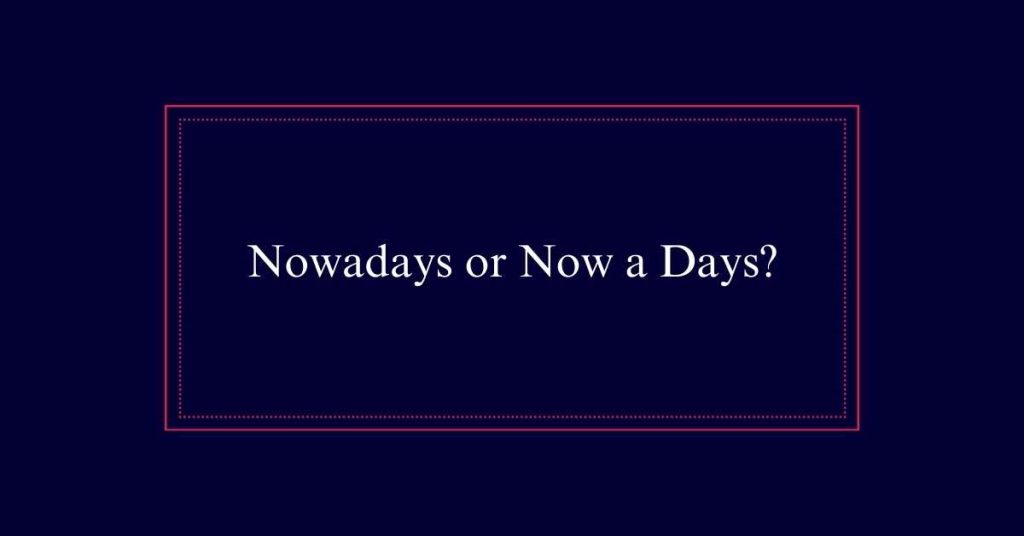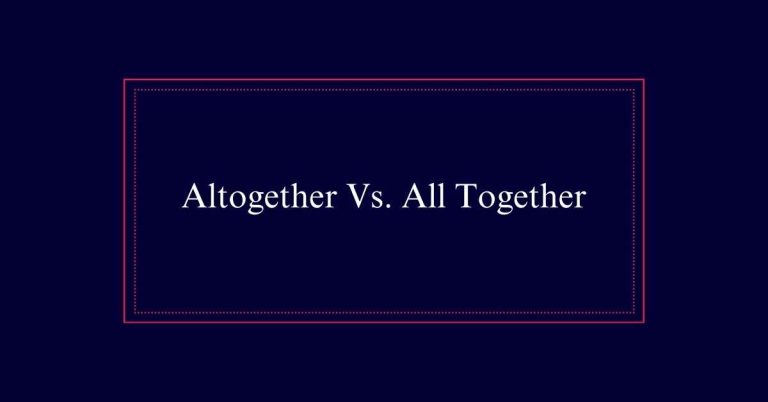Nowadays or Now a Days?
The correct term is ‘nowadays,’ written as a single word. It refers to current times or modern trends. Avoid common misspellings such as ‘now a days,’ ‘nowdays,’ and ‘nowadays.’ Use ‘nowadays’ as an adverb and place a comma after it when it starts a sentence. Proper usage guarantees clarity and professionalism in your writing. Misusing this term can lead to confusion and errors.
Correct Spelling: Nowadays
The correct spelling of the term is ‘nowadays,’ written as a single word. This form is the only correct way to spell it. Spelling it as more than one word, such as ‘now a days’ or ‘now days,’ is incorrect.
‘Nowadays’ is used to refer to current times or modern trends. For example, ‘Nowadays, people prefer digital communication over traditional mail.’ It is essential to use ‘nowadays’ correctly to convey contemporary ideas effectively.
Common Misspellings
Incorrect spellings of ‘nowadays’ are common and can lead to confusion. Many people mistakenly write it as separate words or in other incorrect forms. Knowing the correct spelling is crucial for clear communication. Below are common misspellings and their correct form.
| Incorrect Spelling | Correct Spelling |
|---|---|
| now a days | nowadays |
| nowdays | nowadays |
| nowaday | nowadays |
| now-a-days | nowadays |
Spelling Mistakes to Avoid
Frequent spelling mistakes with the word ‘nowadays’ can easily be avoided with a bit of attention to detail. The correct spelling is always as one word: ‘nowadays’. Common errors include ‘now a days’, ‘nowdays’, and ‘nowaday.’ These variations are incorrect.
To prevent these mistakes, remember that ‘nowadays’ is a single, compound word. Additionally, be mindful of its proper grammatical use. ‘Nowadays’ should never be used as an adjective.
Examples of Proper Use
Proper use of the word ‘nowadays’ can be illustrated through clear and concise examples.
For instance, ‘Nowadays, people prefer online shopping over traditional methods.’ This sentence correctly uses ‘nowadays’ to indicate a current trend.
Another example is, ‘There are common sights at a Black Friday sale nowadays—giant TVs, blenders, and coffee makers.’ Here, ‘nowadays’ effectively highlights what is typical in present times.

Additionally, ‘Nowadays, it would be incredibly hard for businesses to reach credibility without first establishing an online presence,’ shows proper usage by emphasizing a modern necessity.
Remember to use ‘nowadays’ as an adverb, not an adjective, and place a comma after it when it starts a sentence.
Misuse in Sentences
While proper usage of ‘nowadays’ enhances clarity, its misuse can lead to confusion and errors in writing. Common mistakes include spelling it as ‘now a days’ or ‘nowdays,’ using it as an adjective, and failing to use a comma after it when it starts a sentence. Additionally, misusing ‘nowadays’ to describe temporary situations can distort meaning.
| Incorrect Usage | Correct Usage |
|---|---|
| My car is a nowadays car | My car is modern |
| Now a days, people are… | Nowadays, people are… |
| Nowdays, we see many… | Nowadays, we see many… |
| Nowadays, I’m wearing… | I’m wearing a blue shirt nowadays |
| It is a nowadays trend | It is a modern trend |
Usage in Modern Context
In contemporary language, the term ‘nowadays’ is frequently employed to describe trends and behaviors that are prevalent in the present era. This term is pivotal for articulating current societal norms and practices. Its usage helps in highlighting shifts in culture, technology, and everyday habits.
Technology: Nowadays, smartphones are ubiquitous.
Communication: People nowadays use social media for instant updates.
Shopping: Online shopping has become the norm nowadays.
Health: Nowadays, fitness apps are widely popular.
Work: Remote work is more common nowadays.
Punctuation Rules
Understanding the proper punctuation when using ‘nowadays’ is important for maintaining clarity and professionalism in writing.
When ‘nowadays’ begins a sentence, it should be followed by a comma. This helps to set it apart as an introductory element. For instance, ‘Nowadays, people prefer digital books over printed ones.’ This usage guarantees that the sentence flows smoothly.
Additionally, refrain from using ‘nowadays’ as an adjective. It should describe a general time frame, not a specific object. For example, ‘My car is modern,’ not ‘My car is a nowadays car.’
Not an Adjective
Nowadays should never be used as an adjective in your writing. It is an adverb that refers to the present time and should not modify nouns. Incorrect usage can confuse readers and reduce the clarity of your message.
Here are some key points to remember:
- ‘Nowadays’ functions as an adverb, not an adjective.
- Use it to describe current trends or habits.
- Avoid using it to describe temporary situations.
- Always use a comma after ‘nowadays’ if it starts a sentence.
- Replace it with ‘modern’ or ‘current’ for adjectives.
For example, instead of saying, ‘My car is a nowadays car,’ you should say, ‘My car is modern.’
Temporary Situations
Temporary situations often demand specific language to capture their transient nature effectively. Words like ‘currently,’ ‘for now,’ or ‘at the moment’ are better suited for describing temporary states. Using ‘nowadays’ in these contexts can be misleading, as it implies a broader, more temporary trend.
For example, saying, “Nowadays, I am working from home” suggests a long-term shift rather than a temporary arrangement. Instead, you should say, “Currently, I am working from home.” This distinction guarantees clarity and precision in communication.
Accurate language use is essential to avoid confusion and to convey the intended meaning. Therefore, it is important to choose words that correctly reflect the temporary nature of a situation.






